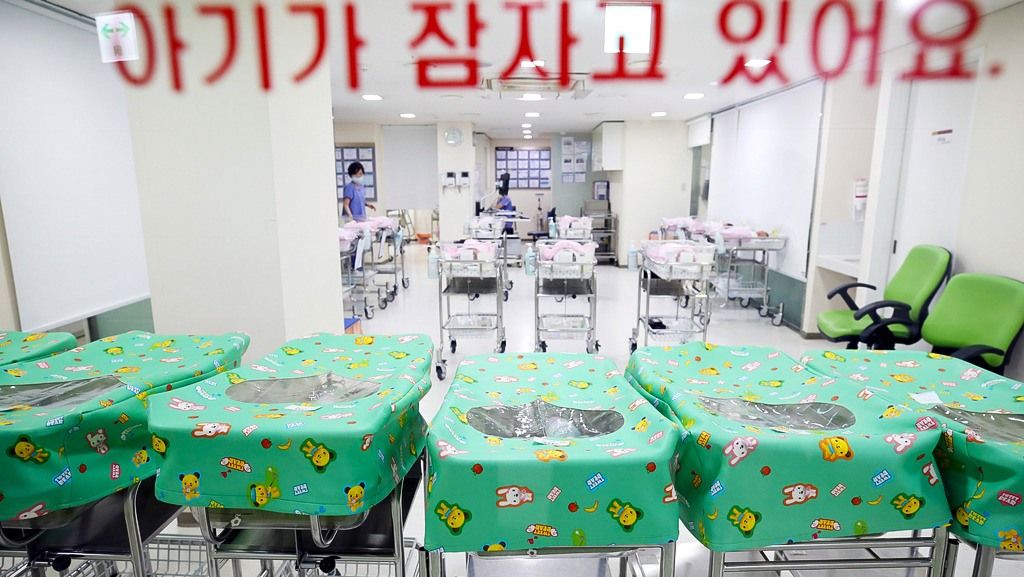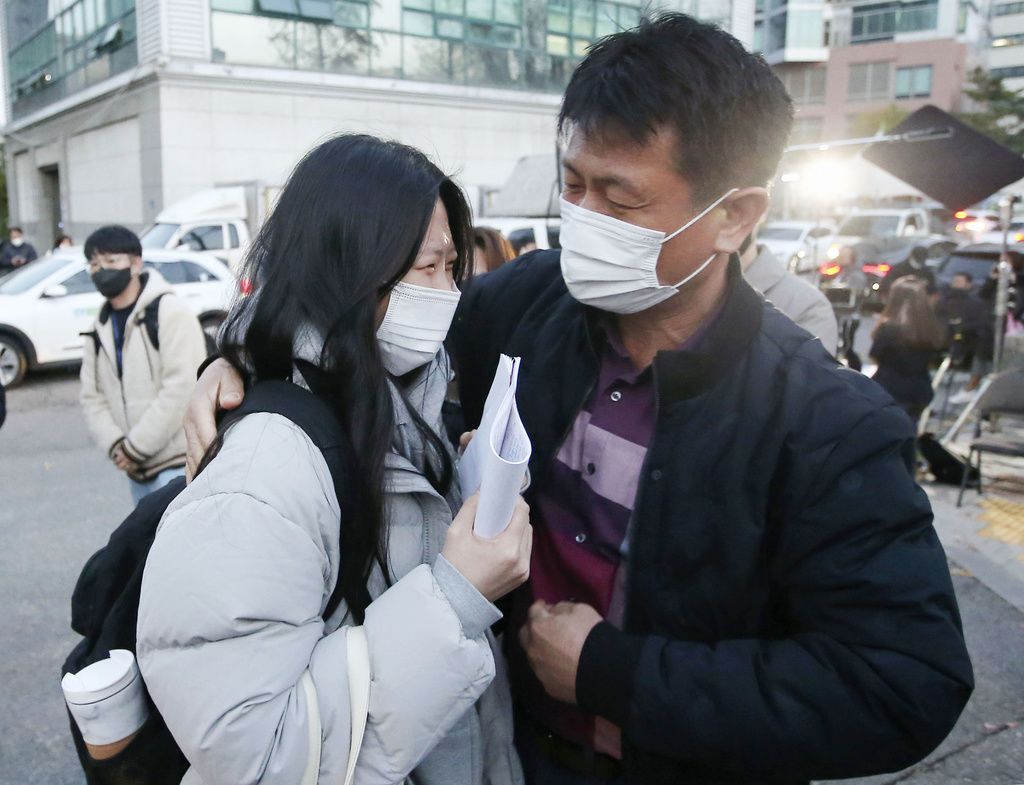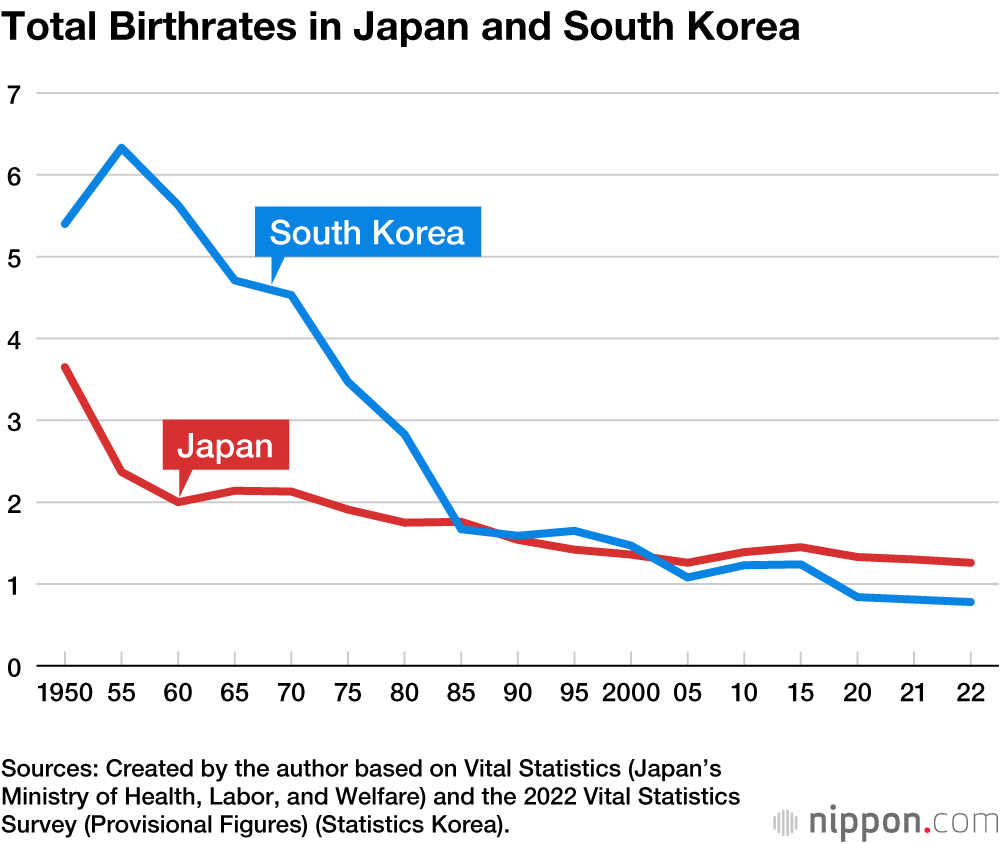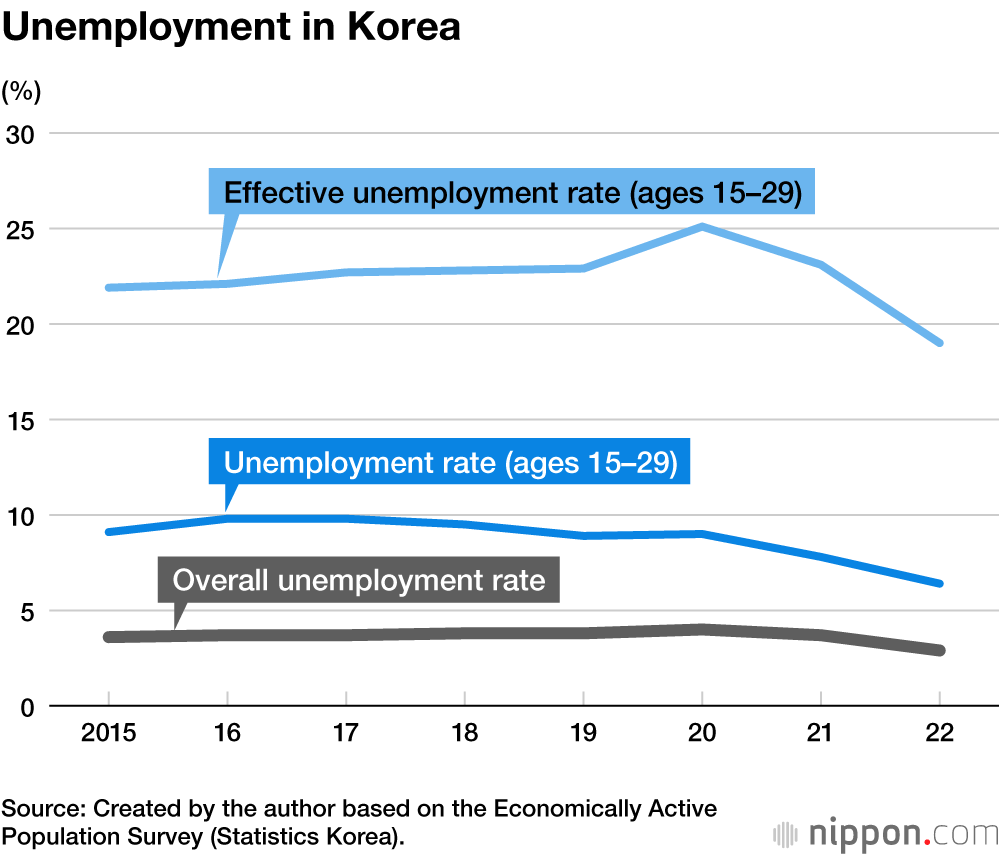
How South Korea’s Birth Rate Dropped Below Japan’s
World Society Education Work- English
- 日本語
- 简体字
- 繁體字
- Français
- Español
- العربية
- Русский
A Korean-Style “One Child” Policy
Why has South Korea’s birthrate plummeted even more rapidly than Japan’s?
The country has seen a marked decline since 2015. This is linked to the fact that most women giving birth from that year were themselves born and raised from the mid-1980s. That period saw a change in the nation’s population policies, from the previous “have two children and raise them well” to “have just one child and raise it well.” It is easy to imagine that shift has had influenced the falling birthrate.
Fewer Desirable Jobs and More Unemployment
Another major apparent influence on South Korea’s falling birthrate is the poor economic situation for young people. Confucian thought is still deeply ingrained there, and people usually only have children after getting married, as in Japan. However, many young people are unable to find stable employment and are left in a position where marriage is a difficult choice.
In 2022, the Korean unemployment rate for the segment aged 15–29 was 6.4%, more than double the overall unemployment rate of 2.9% and far above Japan’s rates of 4.8% for ages 20–24 and 3.8% for 25–29.
One reason for this is the high percentage of students going on to university, leading to a mismatch in postgraduation job supply and demand. There is also a large wage gap between the primary labor market of major companies, like Samsung Electronics and Hyundai Motor Company, and the secondary labor market of small to medium-sized enterprises. This labor market polarization is progressing, and there is an even greater disparity in labor conditions than in Japan. The job-search battle around the limited access to large companies is growing increasingly fierce.
Employees of larger companies are much better off, with relatively higher salaries, better working conditions, and labor union protections. Those in SMEs, though, earn low wages, work under harsher conditions, and have no unions to protect their rights in negotiations with management, making these companies far less attractive to job seekers. This leads to many young people becoming dead set on entry to larger companies, to the point of choosing unemployment after graduation over entering a smaller company, although those larger companies still hire only a few job seekers.
The data supporting this can be found in the effective unemployment rate, which takes the official unemployment rate announced by the government and adds the “hidden unemployed,” meaning those who wish to work but are not actively looking for jobs for various reasons, and the underemployed, meaning those who work less than 18 hours a week. The effective unemployment rate for those aged 15–29 in 2022 had fallen slightly from its pandemic peak, but was still 19%.
Many young people who fail to find employment at large companies end up trying the public service examination, but it is not so simple to pass. The applicant rate is falling yearly, but the annual applicant-to-pass ratio for the ninth, and bottom, level for the national civil service exam was 34.3 to 1.
Another economic factor in the falling birthrate is the rising price of real estate and a resulting increase in unmarried or late-marrying people. The tradition in Korea is for men to prepare a family home before marrying, and the rising cost of housing in recent years has thereby triggered a decline in marriage rates. The Bank of Korea recently enacted emergency interest rate hikes that brought down the price of condominiums, but the interest rate on mortgages has risen, keeping home ownership a distant dream for many.
The Heavy Burden of Education Costs
The high cost of education is another reason people hesitate to have children. In South Korea, the cost of supplemental education like hagwon cram schools and private lessons is particularly high. In 2021, the total expenditures on supplemental education for students in elementary through high school increased 21% year on year to 23.4 trillion won, and the percentage of students in such education hit 75.5%. The average monthly cost of education per student amounts to 485,000 won, while for high school students alone that rises to 649,000 won.
These are just averages, of course, and there is great variance between regions or income groups. In particular, the reality in places like the Gangnam district of Seoul, and particularly the neighborhood of Daechi-dong, with its concentration of famous cram schools, staggers the imagination. For example, it costs as much as 2 million won simply to ask for advice from an entrance exam coordinator on how to raise a student’s official records by a few points. These records contain not only the student’s grades for the three years of high school, but also awards received both in and outside of school, certificates, language exam results, extracurricular activities, volunteering, clubs, and career aspirations. Why does it cost so much?
University enrollment in South Korea can be divided into two basic types: regular admission and additional recruitment. Additional recruitment is based on consideration of school records, a self-introduction essay, teacher recommendations, and interviews, while regular admission focuses primarily on scores from the College Scholastic Ability Test. The rate of additional recruitment admissions is growing every year. In 2000, it was a mere 3.4% of admissions, but in 2023 that grew to 78%. This has happened because many universities have decided that CSAT scores do not measure skills like identifying problems, critical or creative thinking, and expressive ability.

Families see off students on their way to take the CSAT in Seoul. (© Kyōdō)
Student records are the most important thing for gaining admission into Seoul’s famous universities, so parents send their children to famous cram schools. With separate private lessons in addition to cram school, the monthly cost per subject can reach several hundred thousand won or more.
The Curse of the “Edupoor”
Around the time when all the cram schools let out, the streets around the Eunma intersection in the Daechi-dong area of Gangnam turn into a parking lot, as parents all come to pick their children up. When they get home, the children will still not be able to go to bed. They will have to review and do homework, and many will stay up to 3:00 or 4:00 in the morning. These children are fighting a lonely war on the entrance exam battlefield.
The education inferno is not limited to high school. Many parents start their children in supplementary education from kindergarten. An English-language kindergarten, where most interactions are done in English, can cost 1.5 million won a month. From elementary school, children often go to both cram school and private lessons. That can bring the education expense for a single child to 2 to 3 million won a month.
The crushing burden of education costs has given rise to a segment of the population who consider themselves “edupoor,” a Korean neologism from the English words education and poor. The term refers to households that spend more than average on education, despite the fact that they are going into debt and living in increasingly impoverished conditions to do so. The private think tank Hyundai Research Institute estimates from 2011 data that roughly 13% of all households with children were edupoor then. Now, over a decade later, it is quite likely that the percentage is higher.
Working Together for Solutions
South Korea’s falling birthrate will lead to a shrinking, aging work force and an eventual major drop in labor supply. That is surely going to have a negative influence on business operations. At the same time, fewer young people will mean a smaller group with savings, and in fact more older people will in turn have to depend on their own past savings to live off of, meaning that public savings and investment will suffer as a whole. A decline in the younger generation will produce a paucity of new ideas and reduced capital investment, also inviting stagnation in corporate production. These will all factor in slowing down economic growth and weakening the social welfare system’s sustainability.
On top of that, many universities could find themselves threatened with closure due to lack of students, and the number of young people fit to serve in the military is also dropping rapidly. It is going to be difficult to maintain the size of the Republic of Korea armed forces. In fact, the current size of the military is around 500,000 personnel, down from 600,000 in 2018. For South Korea, which is currently in an uneasy truce with North Korea, the falling birthrate is a serious issue touching directly on national security.
The Korea Legislation Research Institute ran a simulation and announced in August 2014 that if the nation stayed at the 2013 birthrate of 1.19, by 2750 there would be no more South Korea. We have already dropped far below that rate, indicating a future where Korea will vanish from the earth far earlier.
So far, I have discussed how Korea’s falling birthrate differs from Japan’s. However, they share many of the same causes, such as the trend toward later or no marriage and gender discrimination in wages and other areas. It also seems that both countries need to bolster not only childcare policies for households raising children, but also employment measures for young people, public housing measures, and other forms of support to ease the economic burden of marriage.
So, why not make use of the improving Japan-Korea relationship as an opportunity to work together in addressing the falling birthrate, since it is a top priority for both nations? We should pool our insights for the future of both sides.
(Originally published in Japanese. Banner photo: Inside a Seoul maternity ward. © Yonhap News Agency/Kyōdō.)

